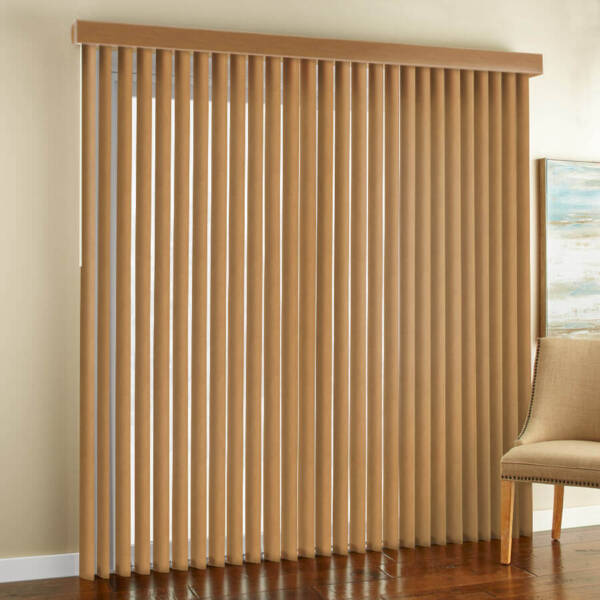Vertical blinds are a popular window covering choice for many homes and offices. They offer style, privacy, and light control. However, choosing the right material for your vertical blinds can be a daunting task. From fabric to PVC to wood, there are many options available. In this comprehensive guide, we will help you choose the best materials for your vertical blinds.
Fabric Vertical Blinds

Fabric vertical blinds are a great choice if you’re looking for a soft, warm look for your windows. They are available in many colors and patterns, giving you plenty of options to match your decor. Fabric vertical blinds can be made from different materials, such as cotton, polyester, and linen. Polyester is the most popular material for fabric vertical blinds because it is durable, easy to maintain, and affordable.
Advantages:
- Soft and warm look
- Available in many colors and patterns
- Affordable
Disadvantages:
- Stains easily
- Not suitable for high humidity areas
PVC Vertical Blinds

PVC vertical blinds are a practical choice for busy households and offices. They are made from a type of plastic that is durable, easy to maintain, and affordable. PVC vertical blinds are available in many colors and textures, including wood grain, so they can mimic the look of real wood. They are also ideal for high humidity areas, such as bathrooms and kitchens, because they are water-resistant.
Advantages:
- Durable and long-lasting
- Easy to maintain
- Suitable for high humidity areas
- Affordable
Disadvantages:
- Not as elegant as other materials
- Can fade over time
Wooden Vertical Blinds

Wooden vertical blinds are a classic and elegant choice for your windows. They are made from natural materials, such as basswood, bamboo, and maple, and can add warmth and richness to any room. Wooden vertical blinds are available in different stains and finishes, so you can match them to your furniture and decor. They are also energy-efficient, as they can keep your room warm in winter and cool in summer.
Advantages:
- Classic and elegant look
- Made from natural materials
- Energy-efficient
- Durable and long-lasting
Disadvantages:
- Expensive
- Not suitable for high humidity areas
Faux Wood Vertical Blinds

Faux wood vertical blinds are a great alternative to wooden vertical blinds. They are made from synthetic materials, such as vinyl and composite wood, and can mimic the look of real wood. Faux wood vertical blinds are durable, easy to maintain, and affordable. They are also suitable for high humidity areas, such as bathrooms and kitchens, because they are water-resistant.
Advantages:
- Mimics the look of real wood
- Durable and long-lasting
- Easy to maintain
- Suitable for high humidity areas
- Affordable
Disadvantages:
- Not as elegant as real wood
- Can warp over time
Metal Vertical Blinds

Metal vertical blinds are a modern and sleek choice for your windows. They are made from aluminum, stainless steel, or other types of metal, and are available in many colors and finishes. Metal vertical blinds are durable, easy to maintain, and affordable. They are also energy-efficient, as they can reflect sunlight and heat.
Advantages:
- Modern and sleek look
- Durable and long-lasting
- Energy-efficient
- Easy to maintain
- Affordable
Disadvantages:
- Not as elegant as other materials
- Can be noisy when opening and closing
Conclusion
Choosing the right materials for your vertical blinds is an important decision. Fabric vertical blinds are a great choice if you’re looking for a soft and warm look. PVC vertical blinds are practical and ideal for high humidity areas. Wooden vertical blinds are classic and elegant, while faux wood vertical blinds are a great alternative. Metal vertical blinds are modern and sleek. Whatever your choice of material, with this comprehensive guide, you will be able to find the perfect vertical blinds for your windows.

 Español
Español

















